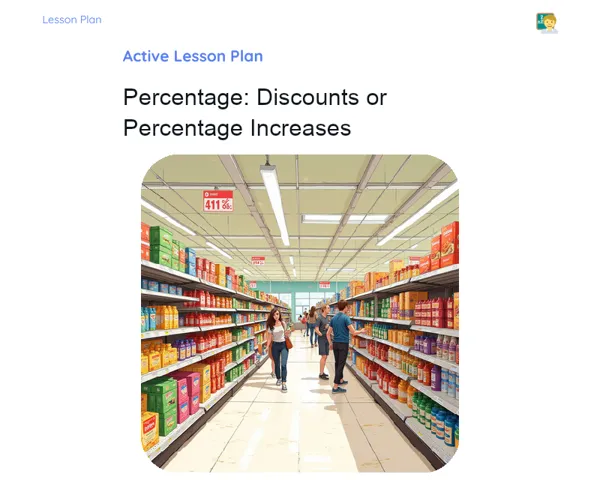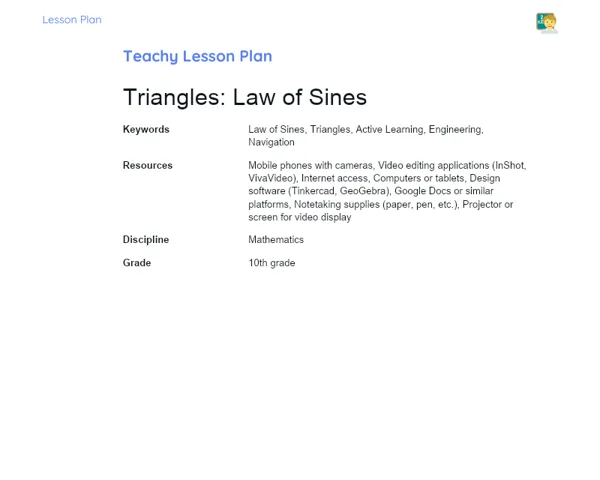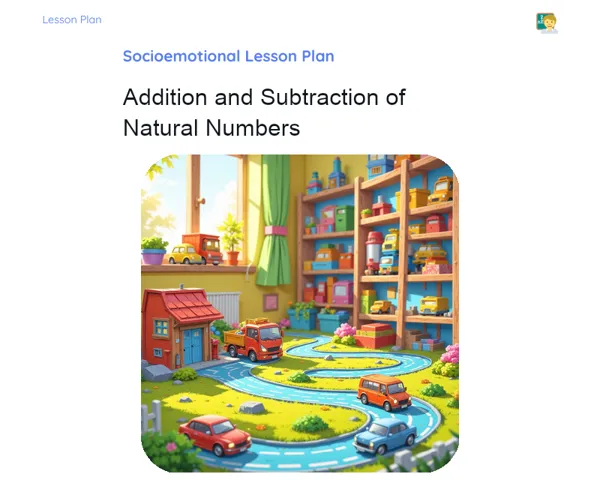Lesson Plan Teknis | Inequalities: Introduction
| Palavras Chave | First-degree inequalities, Graphical representation, Problem-solving, Number line, Hands-on activity, Job market, Logical reasoning, Data interpretation, Mathematical skills, Real-life applications |
| Materiais Necessários | Introduction video (2-3 minutes), Worksheets with examples of everyday situations, Whiteboard or chalkboard, Markers or chalk, Ruler, Calculators, Sheets of paper, Pencils, Erasers |
Objective
Duration: 10 - 15 minutes
The aim of this phase in the lesson plan is to lay a strong foundation for students on first-degree inequalities, which is crucial for tackling more advanced mathematical problems. By honing practical and experimental skills, students will be well-equipped to apply this knowledge in real-world scenarios as well as in the job market, where problem-solving and data interpretation are vital skills.
Objective Utama:
1. Understand the concept of first-degree inequalities and how to represent them graphically.
2. Learn to solve basic first-degree inequalities using various mathematical operations.
3. Identify solutions to inequalities and depict them accurately on the number line.
Objective Sampingan:
- Enhance logical reasoning and problem-solving abilities.
- Encourage understanding of everyday mathematical problems.
Introduction
Duration: 15 - 20 minutes
This part of the lesson plan aims to introduce students to the concept of inequalities, emphasizing their significance and applications in the real world and job market. This initial engagement is designed to spark students' interest and curiosity, readying them for the practical activities and challenges that will follow.
Curiosities and Market Connection
🔍 Curiosities and Market Connection:
Inequalities are extensively used in economics to forecast market behavior and devise the best investment strategies. In engineering, they play a crucial role in structural analysis and determining material stress limits. In programming, inequalities assist in crafting algorithms that optimize processes and efficiently resolve complex issues. In logistics, they enable us to calculate the optimal quantity of products to transport, minimizing costs and delivery times.
Contextualization
Inequalities form a key part of mathematics, enabling us to comprehend and address problems where a relationship of inequality exists between two expressions. These concepts appear in different day-to-day situations, such as budgeting at home, understanding speed limits on roads, or even assessing the growth rate of plants over time. Mastering how to solve inequalities aids us in making informed choices and resolving issues in a logical and effective manner.
Initial Activity
🎥 Initial Activity:
Show a brief video (2-3 minutes) illustrating practical applications of inequalities across various fields such as economics, engineering, and technology. After the video, pose the thought-provoking question to students: "How do you think inequalities can affect the decisions we make in our everyday lives?" Encourage a lively group discussion where students can share their thoughts and insights.
Development
Duration: 55 - 65 minutes
This phase is designed to give students the chance to apply their understanding of inequalities in practical, everyday contexts. By engaging in real problem-solving, students reinforce their theoretical knowledge, strengthen their problem-solving skills, and practice the graphical representation of solutions, thus preparing for future academic and career challenges.
Topics
1. Understanding first-degree inequalities
2. Solving basic first-degree inequalities
3. Representing solutions of inequalities on the number line
4. Interpreting inequalities in everyday contexts
Thoughts on the Subject
Prompt a reflection session with students on how inequalities can be beneficial in their daily lives and professional settings. Ask how they think the ability to solve inequalities could aid career paths like engineering, economics, and IT. Encourage them to brainstorm practical examples and discuss these in small groups before sharing with the class.
Mini Challenge
Constructing and Solving Inequalities
In this hands-on activity, students will be assigned to groups to tackle a set of problems involving inequalities. Each group is tasked with creating a realistic problem scenario that can be addressed with an inequality, and then solving that inequality.
1. Divide the class into groups of 3 to 4 students.
2. Provide each group with a worksheet featuring examples of common situations that can be represented with inequalities (e.g., personal budget, speed limits, etc.).
3. Instruct the groups to select one situation and write down the corresponding inequality.
4. The groups must solve the inequality and illustrate the solution on the number line.
5. Each group should present their scenario, the inequality they formed, the solution they calculated, and the graphical representation to the class.
Foster a practical understanding of inequalities through the construction and resolution of real-life problems, enhancing students' ability to apply mathematical concepts in everyday contexts.
**Duration: 30 - 35 minutes
Evaluation Exercises
1. Solve the inequality: 2x - 5 > 3.
2. Solve the inequality: -3x + 7 ≤ 1.
3. For which values of x does 4x + 2 ≥ 10 hold true?
4. Draw the number line and depict the solutions for the inequalities: x - 3 < 2 and 5x - 9 > 6.
Conclusion
Duration: 10 - 15 minutes
The aim of this concluding phase is to reinforce students' understanding of first-degree inequalities, encouraging reflection on their practical implications. By recapping essential points and discussing the experiences encountered during the lesson, students can solidify their learning and appreciate the importance of the skills acquired for addressing real-world problems.
Discussion
Encourage a discussion with students about the topics covered, inviting them to reflect on how inequalities are relevant in day-to-day life and work environments. Ask about any challenges faced, the strategies employed, and how the practical activity aided their comprehension of the subject. Prompt them to share personal experiences and explore how the skills learned can be applied in real situations.
Summary
Summarize the key takeaways from the lesson, emphasizing the definition of first-degree inequalities, methods of solving them, and how to graphically represent solutions on the number line. Reinforce the significance of grasping and solving inequalities for making well-informed and efficient decisions across various knowledge fields.
Closing
Explain the connection made between theory and practical application, highlighting the importance of constructing and solving real problems as a means to solidify learning. Conclude by stressing the role of inequalities in solving daily and professional challenges, thus preparing students to tackle future hurdles in both academia and the job market.



